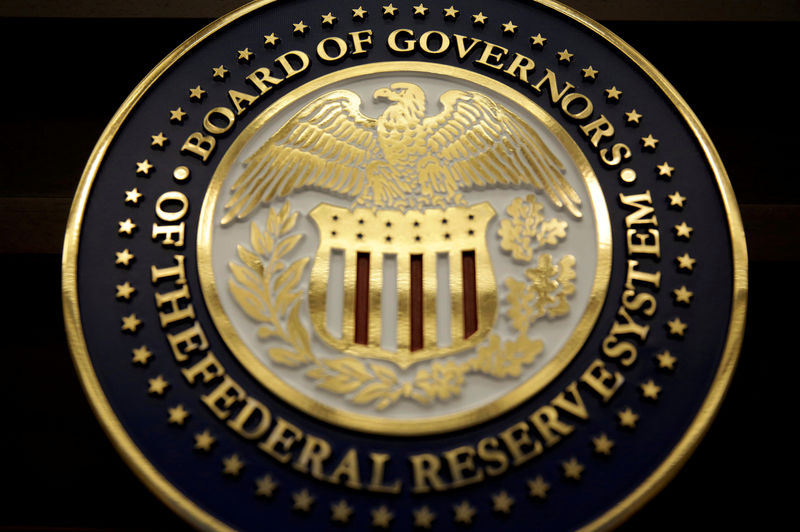(Bloomberg) -- Rates traders are stubbornly holding onto hedges against the risk that the Federal Reserve will drop borrowing costs below zero next year, even as officials signal they’re not headed down that path.
Futures started pricing in the possibility last week of the Fed cutting its target rate below zero as soon as December, with the positioning at least in part because of accounting technicalities. The market has since scaled back some of those wagers. But it’s still reflecting the risk of a negative rate in the second quarter of 2021, and eurodollar options trades have emerged that target a Fed rate of minus 0.5% by mid-2021.
These positions are popping up as the economic devastation of the pandemic is becoming painfully clear. Tuesday’s inflation data showed a record monthly drop in core consumer prices, and a sustained trend of declines could exacerbate concern about the risk of deflation, suggesting that even zero rates could start to be restrictive. Meanwhile, the country’s top infectious disease official is warning of the dangers of reopening the economy too soon.
Some investors are starting to contemplate a darker outlook where the central bank is forced to take more dramatic steps than it currently envisages, after it slashed rates to zero to support the economy.
“In a world where the neutral rate is moving lower, at some point in the fall we’ll arrive at a point where fed funds at zero is tight monetary policy,” said Ed-Al Hussainy, a senior strategist at Columbia Threadneedle.
President Donald Trump weighed in Tuesday with a call for the Fed to follow its European peers in cutting rates below zero. While he described the move as a “GIFT” to the economy, central-bank officials have warned against it over the past two days.
The St. Louis Fed’s James Bullard highlighted the policy’s mixed track record, and even dovish Minneapolis Fed President Neel Kashkari said other tools should be tried first. The Chicago Fed’s Charles Evans said “at best, we’d have to study it more.” Chairman Jerome Powell may add his weight to this chorus Wednesday in his webinar on current economic issues.
Market Distortion
The market’s behavior isn’t necessarily a bold macro call, as strategists at UBS and Citigroup (NYSE:C) are among those highlighting how recent flows in options may have distorted wagers in fed funds. But the pricing coincides with the threat of an economic slump to rival the Depression. And an unprecedented policy shift clearly isn’t beyond the realm of possibility for a central bank that has pledged to do “whatever it takes.”
Still, a negative fed funds rate could create more problems than it solves.
One widely cited problem with negative rates in the U.S. is the toll on savers -- at roughly $4.8 trillion, the U.S. money-market industry dwarfs its European counterpart. Then there’s the burden on the banking sector, as negative rates can erode profits. Moreover, it’s a policy that would arguably target the wrong end of the yield curve, as longer-term rates are the benchmark for mortgage borrowing and corporate credit.
Yield-curve control -- whereby the central bank targets a specific level of yields at one or more points on the curve (as in Japan) -- may be a more efficient way to tether borrowing costs that are most relevant to growth. Governor Lael Brainard is among Fed officials who’ve flagged the possible advantages of this policy, along with stronger guidance on how long the central bank plans to keep interest rates so low.
“The substitute for negative rates, which is forward guidance and yield curve control, those things I think will happen in the next 12 months,” said Columbia Threadneedle’s Al-Hussainy.
And while the current fed funds rate has traded close to zero over recent weeks, it’s unlikely it would slip below that level without the Fed explicitly signaling a policy change. That’s because by far the biggest volume in the fed funds market is lending by the Federal Home Loan Banks. Since they can stow money with the Fed for 0%, there’s no incentive for them to lend for a negative rate.
“When rates went negative in fed funds futures over the last few days, at least 50% of it was just due to bad positions being unwound, so that a forced seller could drive prices to a place that doesn’t make sense,” said Scott Buchta, head of fixed-income strategy at Brean Capital, citing anecdotal evidence.
©2020 Bloomberg L.P.
